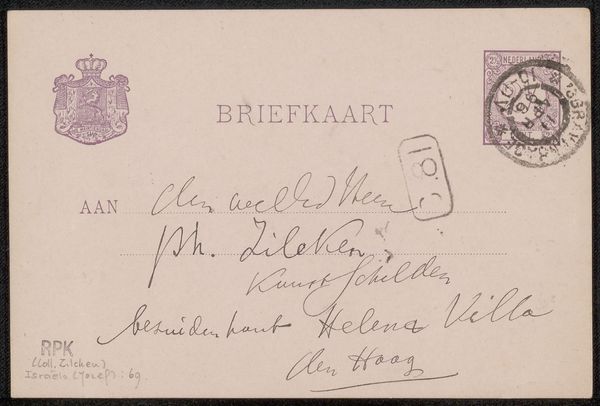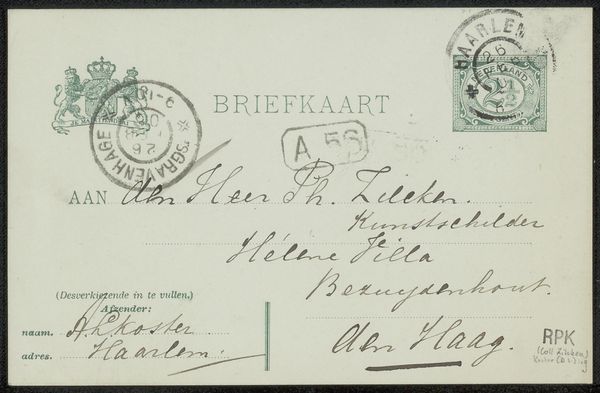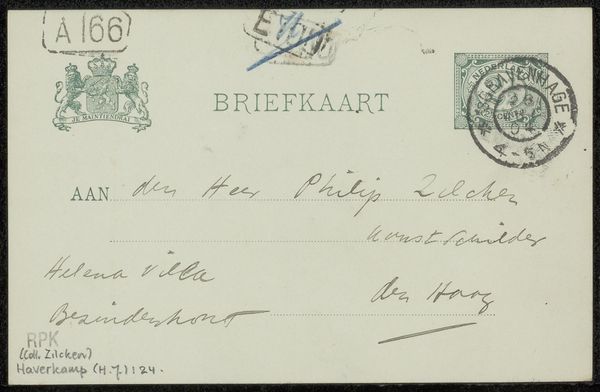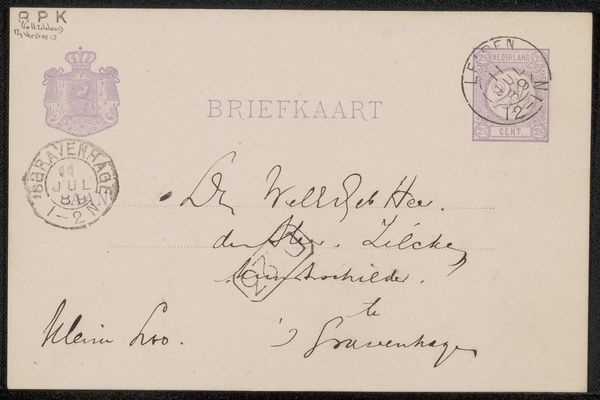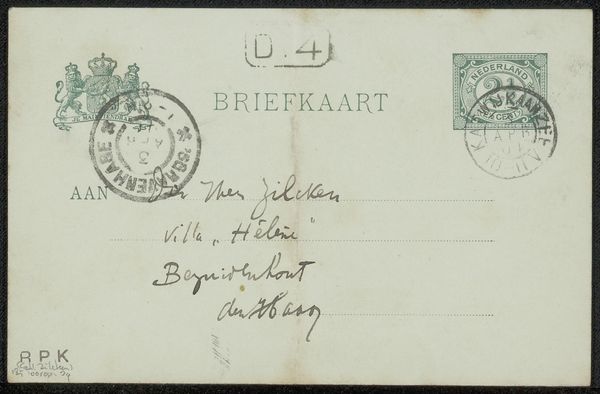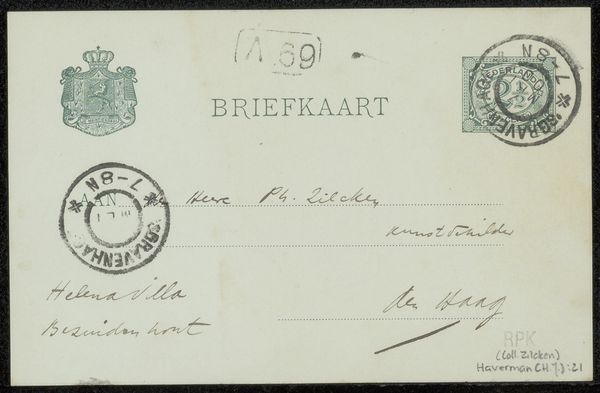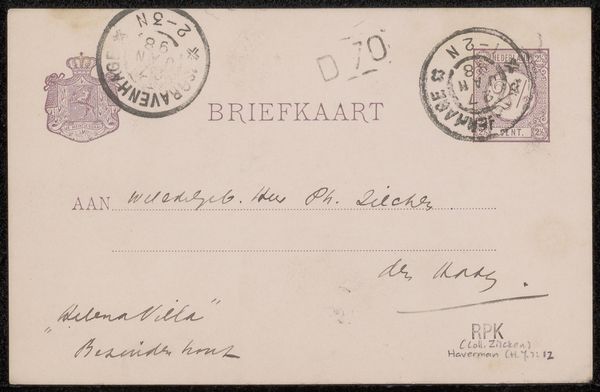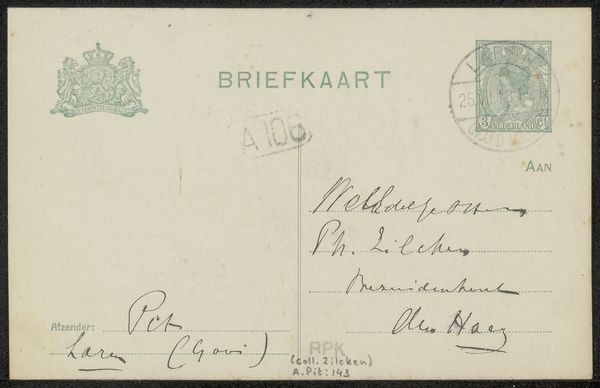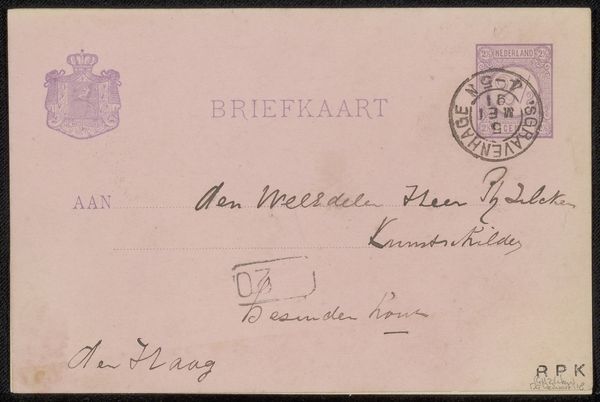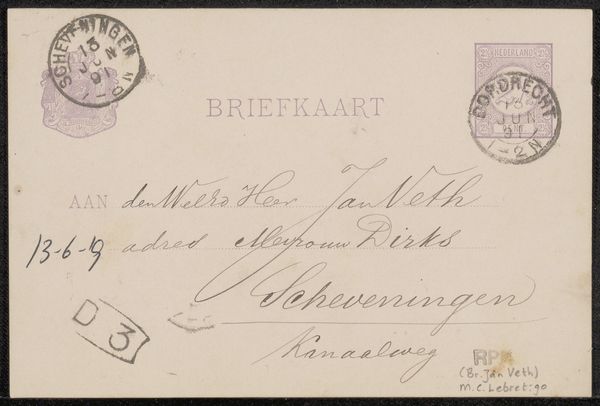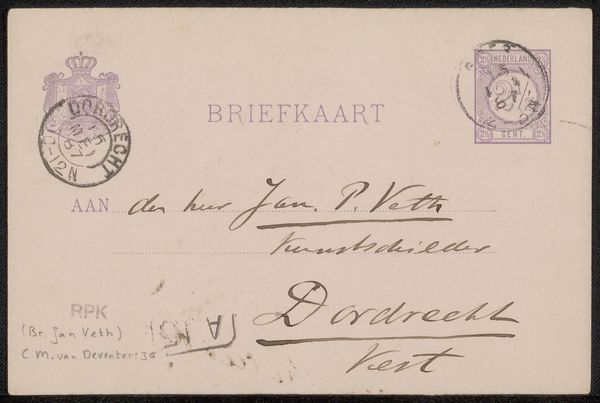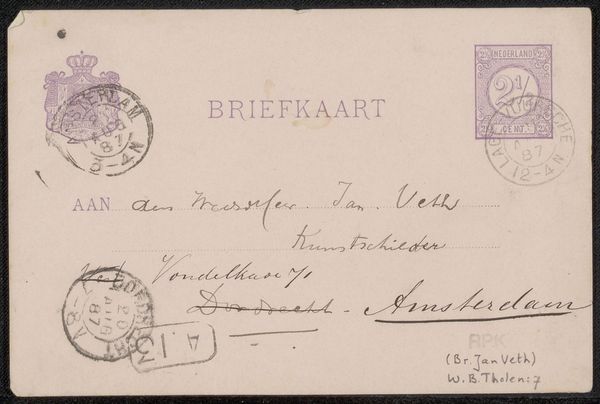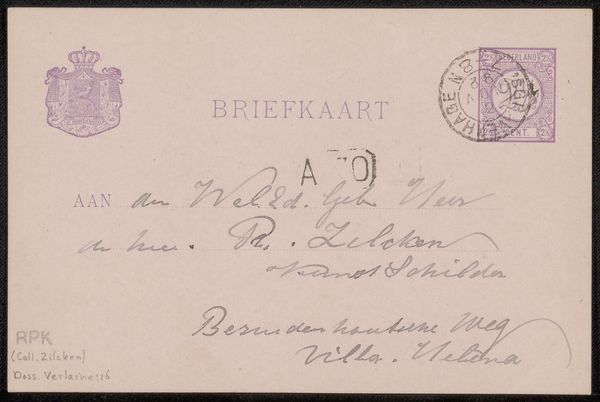
print, textile, paper, photography, ink
#
comic strip sketch
# print
#
hand drawn type
#
textile
#
paper
#
photography
#
personal sketchbook
#
ink
#
idea generation sketch
#
ink drawing experimentation
#
pen-ink sketch
#
pen work
#
sketchbook drawing
#
storyboard and sketchbook work
#
sketchbook art
Copyright: Rijks Museum: Open Domain
Editor: This is a postcard titled "Briefkaart aan Philip Zicken," possibly from 1905, by Pieter Dupont. It appears to be mixed media, combining print, ink, and maybe textile on paper. Looking at the arrangement of text and seals, I'm curious – what stylistic choices stand out to you? Curator: The elements presented work together as components of semiotic interpretation. The stamps and postal markings layered onto the printed form demonstrate a purposeful engagement of function, where each cancellation alters and adds meaning. Dupont is manipulating symbols of communication. Editor: How so? I see stamps and addresses… Curator: Consider the visual weight of the Amsterdam seal juxtaposed against the handwritten address. The hard, mechanically-reproduced stamp contrasts with the soft, personal inscription. This deliberate arrangement foregrounds both objective administrative process and individual gesture, creating a subtle commentary. Do you notice how the angled lines and different stamps create a balance within the rectangle? Editor: I see the angle from the upper left to the bottom right that you're calling attention to, and that the elements aren't equally dark and dense in all areas. How might an image like this challenge artistic conventions of the time? Curator: The subversion lies in the re-contextualization of an everyday object. Dupont is treating the surface as a compositional field where standardized elements of a postal system become aesthetic variables, much like collage would become. The piece then moves beyond utility and questions traditional definitions. Editor: It’s interesting to view an everyday item as a formal composition of shapes, lines, and marks instead of something purely functional. I’ll never look at a postcard the same way again. Curator: Indeed. By stripping away external context and focusing solely on its inherent visual components, new perspectives can be realized.
Comments
No comments
Be the first to comment and join the conversation on the ultimate creative platform.
